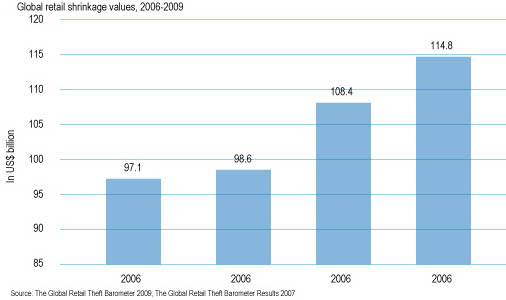It’s an uncertain world. The old reliable drivers of the global consumer industry have gone, yet the new patterns of global consumption have not quite taken shape. This means that consumer companies are having to plan and build for a new kind of consumer economy, without knowing for sure what that new economy will look like.
Consumers today prefer to browse through multiple retail channels in order to learn about products before making purchases. This trend has prompted retailers to broaden their mobile and internet retailing capabilities, open online stores and adopt other multichannel retail practices. While adopting such multichannel strategies may create bottlenecks in efficiently integrating various supply chains, retailers must invest in multichannel retailing, as consumer preference for multichannel options will only increase in the future.
Maybe the multichannel strategies have an influence on retail in some degree. Retail shrinkage increased globally in 2009, as shoplifting was on the rise during the economic recession. To minimize losses due to shrinkage, retailers have adopted a variety of practices, including training staff, adopting relevant theft-prevention technologies and carefully managing the goods receipt process. With retail shrinkage showing no signs of abating, even with the gradual recovery of the retail industry, retailers will need to continue looking for newer ways to tackle this issue.
Figure 1 shows that global retail shrinkage has been increasing since 2006. The onset of the financial crisis in 2008 saw a significant increase in retail shrinkage, which reached US$108.4 billion at the end of 2008, a year-on-year increase of 9.9 percent, as compared to just a 1.5 percent increase in 2007.

Retail shrinkage refers to reduction in inventory — in absolute value or in terms of percentage of sales — due to factors such as theft, supplier fraud, paperwork and administrative errors, and shoplifting. This shrinkage is the difference between the value of stock as it features in the account books and the actual inventory available in the shop.
According to a report by the Center for Retail Research (CRR), the total retail shrinkage in 41 countries or regions across the globe — including China, India, Japan, the US and major European countries — amounted to US$114.8 billion, about 1.4 percent of the total global retail sales in 2009. The percentage of global retail shrinkage in 2009 was 5.9 percent higher than that in 2008.
SZ&W group offers a number of services focused on assisting our clients to address the issues facing their industry sector, in the key areas of governance, performance and growth. These issues include:- reporting & regulation ― corporate governance and stakeholder expectations
- sustainability & the environment ― business operating model structure
- operational efficiency ― supply chain management
- market entry and expansion
- retail format strategies
- consumer trends
- private label
- private equity investment
|